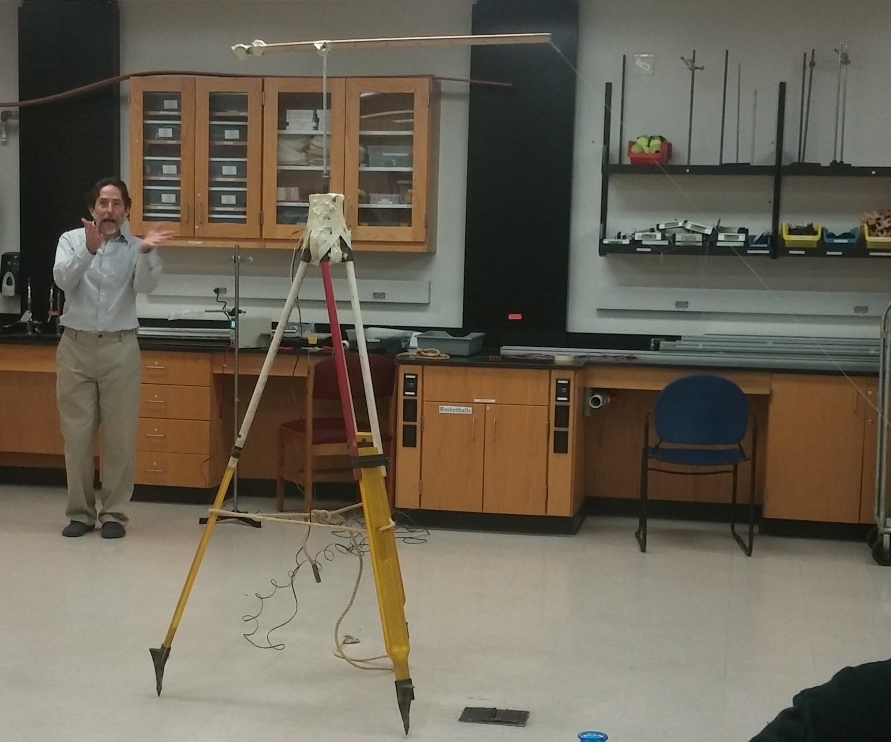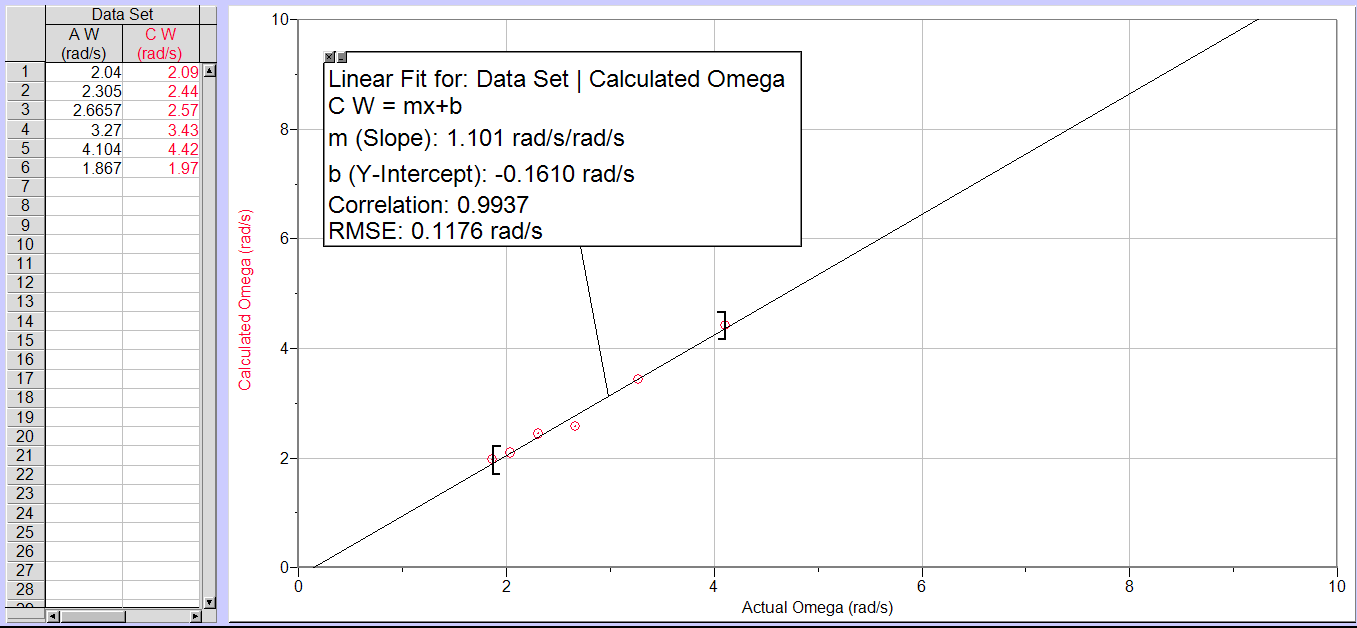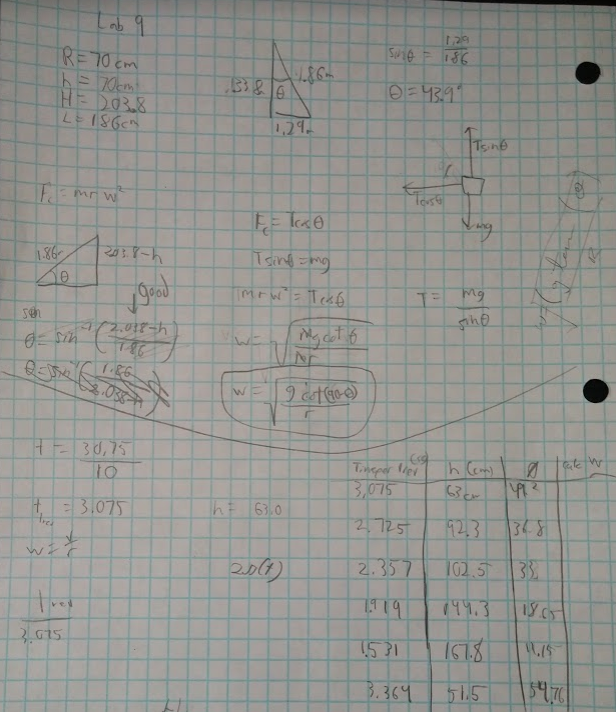Lab Members:
Jarrod Griffin
Christina Vides
Enio Rodriquez
Introduction:
This lab was a fairly easy one to carry out, mainly because the apparatus was already fabricated and set up correctly. We needed only to change the location of the height measuring device so that the mass would strike it and we could find how height the mass was. The purpose of this lab was to show that as the angular speed increases, the distance of a mass from the ground will also increase.
Apparatus/Procedure:
The apparatus is pictured below. For our procedure, we followed the details in the lab manual. We would first attach a mass to the apparatus, they turn the apparatus on. We then measured the time for 10 revolutions and calculated a period from that data. We then found the height of the mass. The angular speed of the system was then changed. We repeated that process six times to get a large sample set.

Data:

The data above compares the how different our calculated and actual values of w were. A slope of one would mean that they are the same and the calculated were the same as the actual. Our slope of 1.1 means that our values were not that off from each other.
Calculations:

Conclusion:
This lab was done to show the relation between angular speed and the height of a mass. It was also to prove that our calculations can be used in the real world. It was also used to check our calculations against known values and compare how different they are. Our calculations and actual values were very close, with around a 10% error.
No comments:
Post a Comment